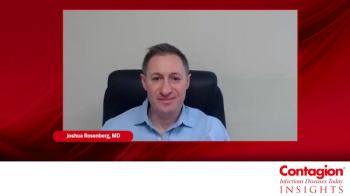
Advancing C diff Management: Fidaxomicin, Microbiome Therapies, and Stewardship
At MAD-ID 2025, Rachel M. Kenney, PharmD, discusses treatment shifts, microbiome innovations, and pharmacists' roles in optimizing outcomes.
At MAD-ID 2025, Rachel M Kenney, PharmD, served as a facilitator for the accredited continuing education session, “Improving Outcomes in C difficile.” The session focused on current guideline updates, emerging treatment strategies, and the critical role of stewardship in managing C difficile infections.
Kenney spoke about key changes in how clinicians are approaching C diff, especially in the context of first-line treatment and microbiome-focused therapies. “It's changed pretty dramatically,” Kenney said, when asked how initial management strategies have evolved in recent years.
“In recent years, we've really moved towards guidelines recommending fidaxomicin as first-line therapy for both initial episodes as well as recurrent C diff. The issue, you know, has historically been medication access, and really the high acquisition cost—or price point—of fidaxomicin has been a little bit of a barrier in practice. But I think one that's worthwhile for us to address as pharmacists.”
In addition to pharmacologic shifts, Kenney noted that the field has entered a transformative period in microbiome restoration. Traditional fecal microbiota transplantation (FMT), long used in recurrent cases, is no longer the mainstay, as certain access pathways have closed.
“Additionally, we have traditional fecal microbiota transplant—or FMT—have kind of been sunsetted. OpenBiome has sunsetted their program, but we're in an exciting era with the availability of two FDA-approved FMT products: Vowst and Rebyota,” she explained. “So implementing those into practice has its own operational challenges and considerations. But again, you know, we have patients who can benefit from those.”
During the MAD-ID session, Kenney and colleagues encouraged attendees to share their institutional experiences and practical approaches to integrating novel therapies. The exchange, she noted, was particularly valuable in helping navigate ongoing barriers like drug access.
“We workshopped and discussed amongst the groups: what are the best practices, what are people doing, and kind of shared some of those best practices among the groups,” she said. “Because I do think, despite those medication access barriers, it's a worthwhile endeavor for us as pharmacists, us as clinicians, to make sure that we're connecting the right patients with fidaxomicin, finding the right patients for Vowst and Rebyota, and making sure that we're optimizing outcomes.”
Diagnostic and antimicrobial stewardship remain cornerstones in preventing C diff outbreaks, Kenney emphasized. She pointed to the importance of not just preventing infection, but also ensuring appropriate identification and treatment when it does occur.
“Stewardship is going to be core to prevention of C diff which is really the best thing we could do,” she said. “But once C difficile does occur, I think diagnostic stewardship—to ensure that we are treating true infection and not colonization—and the evolution of diagnostic stewardship in that area is essential.”
She concluded by reinforcing the critical role that pharmacists and stewardship teams play across the entire continuum of care, from diagnosis to treatment selection to outcomes monitoring. “And then once we do experience C diff, making sure that we're connecting patients to the right treatments that will be best for patient outcomes and optimize patient outcomes is a key role for all of us.”
Newsletter
Stay ahead of emerging infectious disease threats with expert insights and breaking research. Subscribe now to get updates delivered straight to your inbox.

















































































































































































































































































